Filming in Swedish Lapland with Location Scout Susanne Karlsson
Susanne has been working in the industry as a freelance Location Scout for 12 years. In 2009 she founded Swedish Lapland Production & Location Service. More recently, as the demand for her services and Swedish Lapland's locations continues to grow, she has become a co-partner in the production company Salmonfox.
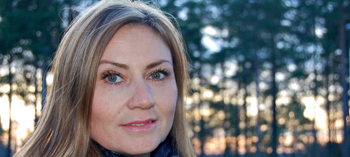 "In location scouting I have found the perfect balance between creative and logical thinking. To understand what the Director is aiming for I have to think creatively. In order to make the Director's vision become a reality and function in the location, I have to think logically."
"In location scouting I have found the perfect balance between creative and logical thinking. To understand what the Director is aiming for I have to think creatively. In order to make the Director's vision become a reality and function in the location, I have to think logically."
Tell me about Swedish Lapland.
We might seem remote but it’s actually quite easy to get to Swedish Lapland. There are several roads to the north-west and mountains from the coast. If you want to go off-road you can go by skidoo, helicopter or tracked vehicle.
Swedish Lapland has a wealth of stunning locations. From the beautiful archipelago on the coast to the dramatic alpine areas on the Norwegian border we can offer productions deep forests, wild rivers, dramatic mountains, fields, roads, modern cities or small typical Swedish villages.
We have glorious summer days with midnight sun and 24 hours of daylight; it makes it a very special place to film.
As a Location Scout in Swedish Lapland, I cover an area the size of Austria. Luckily I was born and raised here so I have good local knowledge and wherever I go I always get fantastic help from other locals. We have a strong history of filmmaking in Swedish Lapland and the result is a good film infrastructure.
We have about 150 film workers. Some are full-time and some are part-time; all are experienced. We also have several production companies and a couple of equipment rental companies.
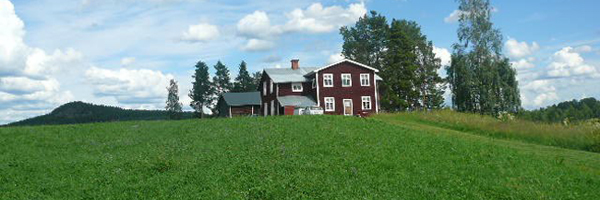 What locations are most commonly used by film and TV crews when they film here?
What locations are most commonly used by film and TV crews when they film here?
My area is a vast European wilderness with an Arctic climate. We have seven months of snow and glorious summer days with midnight sun and 24 hours of daylight; it makes it a very special place to film.
During the winter the ICEHOTEL in Jukkasjärvi is an interesting place for photographic and commercial shoots. All our alpine areas and the spectacular public and private ice roads by the coast in Luleå are very popular.
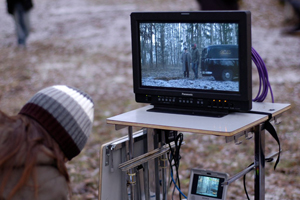 In the summer our beautiful river areas are very popular with film crews. Storforsen, 40 km upriver from Älvsbyn, is one of our gems. It has an 82-metre waterfall and Europe’s biggest free-flowing rapids; it’s an impressive and powerful natural spectacle which has become by far the biggest tourist attraction in the area.
In the summer our beautiful river areas are very popular with film crews. Storforsen, 40 km upriver from Älvsbyn, is one of our gems. It has an 82-metre waterfall and Europe’s biggest free-flowing rapids; it’s an impressive and powerful natural spectacle which has become by far the biggest tourist attraction in the area.
What are the locations that our readers would not associate with Swedish Lapland?
You might not believe it as we are so far north, but we have some wonderfully warm summers and some lovely beaches out in the archipelago.
What has been your most difficult location assignment to date and why?
One summer I scouted for a domestic feature film. We were looking for a steep-but-not-too-steep cliff because our main actor needed to be able to stand on it safely while fishing.
It got windier and the ocean got wilder so after 14 hours I felt like I had been at boot camp for a week.
We did the first day of scouting in a race boat. It was actually a fantastic day. The sun was shining, it was around 26°C and I had a nice-looking and experienced guide so it had all the ingredients for a smooth and happy scout.
But the archipelago is very big and it took forever to travel from one location to the next. The boat was also very small and had no facilities. After a couple of hours the seats felt harder and the small basket of fruit and water I had with me had long gone.
It got windier and the ocean got wilder so after 14 hours I felt like I had been at boot camp for a week. All I wanted was solid ground under my feet and a good meal. We didn’t even find the location we needed!
 What types of production do you work on most?
What types of production do you work on most?
During my career I have worked on film, TV, commercials and documentaries. In the last five years I have mainly been servicing international production companies. My clients have been from Germany, Holland, France and the USA, and we have worked with Continental Tyres, Autogas, McDonald’s and BMW to name a few.
This summer I scouted for a couple of feature films in progress, including Italian Shoes by Henning Mankell, directed by Kenneth Branagh, and The Hypnotizer by Lars Kepler, directed by Lasse Hallström.
Nearly every town in Swedish Lapland has now had some filming experience so they are used to film crews and are happy to offer a good service to productions.
We’ve had some premieres this year as well. I Miss You with Hanna and Erica Midfjäll from Kiruna, directed by Anders Grönros and produced by Göta Film and Garage Film. False Trail with Peter Stormare and Rolf Lassgård, directed by Kjell Sundvall, produced by Sonet Film. One-Way to Antibes with Sven-Bertil Taube, Dan Ekborg and Malin Morgan, directed by Richard Hobert, produced by Eyefeed AB. Somewhere Else with Mikael Persbrant, Helena Bergström, Marie Richardson, directed by Kjell-Åke Andersson, produced by Tur med vädret AB.
Are there anything else you would like to share about filming in Swedish Lapland?
In Sweden we have the ‘Right of Public Access’ (Allemansrätten) law, so Swedish countryside is open to everyone. You are allowed to walk, jog, cycle, ride or ski through the forests and countryside and across other people’s land provided you do not cause any damage to crops, tree plantations or other sensitive landscapes. Don’t disturb and don’t destroy – that’s the main rule when it comes to understanding the Allemansrätten.
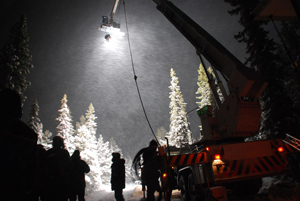 Although we have access to all locations we still have to observe a few common-sense guidelines and productions will still need fiming permits. However, agreements are easily reached with landowners, house owners, SVEVIA (the Swedish road company), county administrations, local municipalities and the Swedish Police.
Although we have access to all locations we still have to observe a few common-sense guidelines and productions will still need fiming permits. However, agreements are easily reached with landowners, house owners, SVEVIA (the Swedish road company), county administrations, local municipalities and the Swedish Police.
The rates for renting locations are still quite low and people are always very keen to work with productions.
As a local I have a responsibility to make sure that the production companies that come to Swedish Lapland take good care of our wonderful, beautiful places and people.
Which are the best airports to use to film in Swedish Lapland and who flies there?
On the Coast are Luleå and Umeå… the capitals of the region. Flying time from Stockholm is a mere 70 minutes. And there are plenty of departures daily. Luleå, Kiruna and Arvidsjaur, Hemavan, Umeå, Skellefteå’s airports are international and there are also airports in Gällivare, Pajala, Storuman, Lycksele and Vilhelmina. Once you’re here, the best way to reach your final destination is by car. The road network is extensive and destinations can often be reached by more than one route.
Fortunately I have to drive a skidoo a lot when scouting and shooting so I’m happy!
What are the most film-crew-friendly hotels in your region?
All of them! Nearly every town in Swedish Lapland has now had some filming experience so they are used to film crews and are happy to offer a good service to productions.
When you are not location scouting or shooting what do you do when you have time off?
When I’m not working I like to be with my family. I have a son who is 21 years old and works as a professional ice hockey player, so I have had many hours in the arena and many more to come I hope. I’m also a big fan of skidooing. I have my own machine and I take her for a ride as much as possible. Fortunately I have to drive a skidoo a lot when scouting and shooting so I’m happy!
Thank you.
Click here to contact Susanne.
Related Posts
Comments
Not Logged in
You must be logged in to post a comment











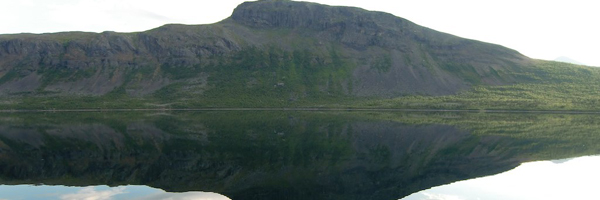
There are 1 comments
Bill Bowling
| #
Beautiful, and one of the great countries of the world!
Reply